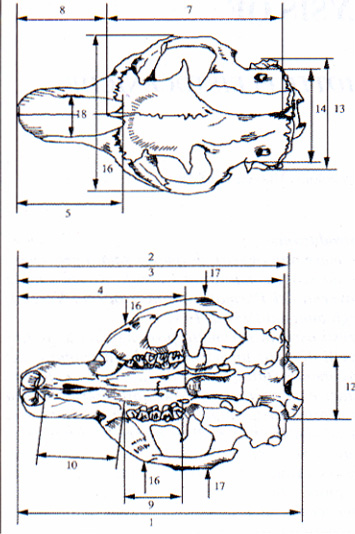
ritorno/back
Fig. 2</B>
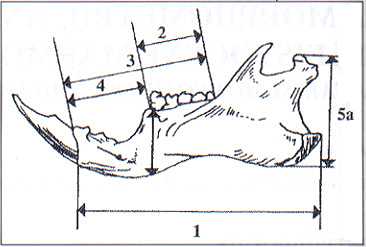
ritorno/back
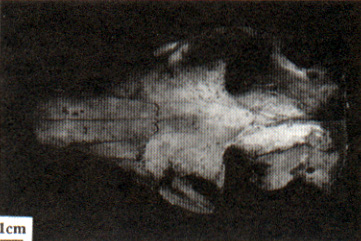
ritorno/back
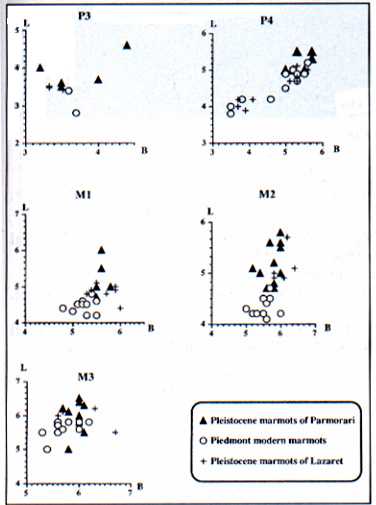
ritorno/back
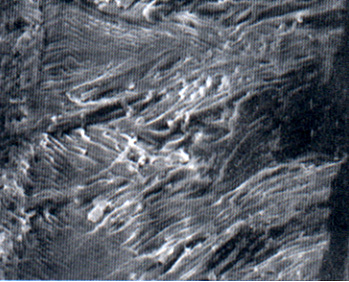
ritorno/back
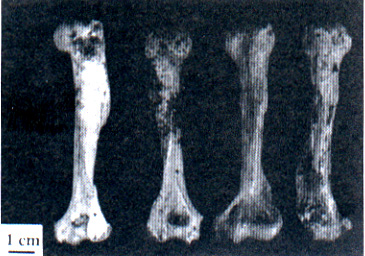
ritorno/back
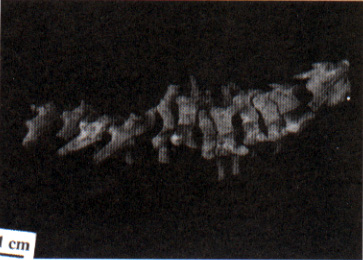
ritorno/back
Table 1/tabulla 1: skull
Measurements in mm
Parmorari Marmots
|
Indivdual |
1 |
2 |
3 |
5 |
7 |
8 |
9 |
10 |
12 |
13 |
14 |
16 |
17 |
18 |
  |
|
1 |
106 |
102,5 |
101 |
59 |
46 |
71 |
40 |
24 |
27 |
23 |
46 |
36 |
  |   |
22 |
|
2 |
100 |
95 |
94 |
57 |
  |
65 |
  |
25 |
26 |
23 |
46 |
37 |
45 |
  |   |
|
3 |
106,9 |
100 |
101,4 |
61 |
43 |
62 |
42 |
24,4 |
29 |
23 |
39 |
38,5 |
  |   |
19,5 |
|
4 |
97 |
94,5 |
92 |
  |
42 |
61,6 |
38,4 |
23 |
25,5 |
21,5 |
46 |
  |   |   |
20,6 |
|
5 |
103,5 |
  |
98,5 |
  |
41,6 |
  |
35 |
24 |
27 |
21,7 |
  |   |   |   |
20,7 |
|
6 |
105 |
110 |
100 |
58 |
  |
71,6 |
  |
24 |
27 |
  |   |   |   |   |   |
|
7 |
103,5 |
100,5 |
99 |
60,7 |
41,4 |
63,8 |
41,3 |
22,5 |
29 |
22 |
47,4 |
39,3 |
48,3 |
  |
20,2 |
|
9 |
  |   |   |   |   |   |   |
23,8 |
  |
20,7 |
  |
45,7 |
  |   |
19 |
|
12 |
99,7 |
  |   |
58,8 |
  |
64,5 |
38,3 |
23,6 |
25,5 |
  |   |   |   |   |
18,5 |
|
13 |
  |   |   |   |   |   |   |
23,7 |
25,4 |
  |   |   |   |   |
17,9 |
Modern marmots
|
Individual |
1 |
2 |
3 |
4 |
5 |
7 |
8 |
9 |
10 |
12 |
13 |
14 |
16 |
17 |
18 |
|
1 |
  |   |   |
55,2 |
39,3 |
  |
36,4 |
19,2 |
19,4 |
  |   |   |
45,7 |
  |
19,2 |
|
2 |
75 |
73 |
69,8 |
45,8 |
30,2 |
  |
28,5 |
26,2 |
18,4 |
37,4 |
31,8 |
39,3 |
50, |
15,2 |
  |
|
3 |
  |   |   |
57,7 |
39,4 |
  |
37,7 |
23,8 |
25,4 |
  |   |   |   |   |
17,8 |
|
4 |
  |   |   |   |
36,2 |
  |
35,9 |
  |
25,9 |
  |   |   |   |   |
17,8 |
|
5 |
937 |
88,8 |
89 |
54,5 |
38,4 |
57,7 |
37,4 |
22 |
24 |
19,7 |
42,5 |
  |   |   |
18 |
|
6 |
91,6 |
90,4 |
87,2 |
54,6 |
42,5 |
  |
42,5 |
22,7 |
25,2 |
21 |
42,4 |
36,8 |
45,6 |
62,8 |
17,9 |
|
7 |
74 |
72,6 |
69 |
45,6 |
  |   |   |
20,6 |
19,3 |
19,2 |
35,5 |
31,7 |
29,8 |
41,2 |
  |
|
8 |
70,4 |
73,2 |
68,7 |
44,5 |
39,3 |
  |
27,8 |
20,6 |
19,4 |
17,6 |
34,7 |
30,6 |
33,7 |
47,2 |
14 |
|
9 |
85,2 |
84,3 |
81,7 |
54 |
  |
55,7 |
  |
22,3 |
20,7 |
16,9 |
39,9 |
38,5 |
  |   |   |
|
10 |
  |   |   |
47,7 |
31,7 |
  |
31,7 |
21,2 |
20 |
  |   |   |   |   |
14,2 |
|
11 |
93 |
38,8 |
87,8 |
58 |
39,5 |
  |
38,5 |
23,2 |
25,5 |
19 |
40,4 |
35 |
42 |
57,7 |
18,5 |
|
12 |
91,8 |
89,7 |
  |   |   |   |   |
22,7 |
23,6 |
  |   |   |   |   |   |
ritorno/back
Table 2/Tabella 2: Mandible
Measurements are in mm
Parmorari marmots
|
Individuals |
1 |
2 |
3 |
4 |
5a |
6 |
|
60 |
  |
23,3 |
41,1 |
18,7 |
  |
18 |
|
61 |
  |   |   |   |   |
20,6 |
|
62 |
69,3 |
21,4 |
39,2 |
19,9 |
37 |
17,5 |
|
63 |
68,3 |
20 |
41 |
18,4 |
35,5 |
18,7 |
|
64 |
70,3 |
21,7 |
38,2 |
17,3 |
38,6 |
19 |
|
65 |
  |
23,1 |
40,2 |
18 |
  |
18,5 |
|
66 |
  |
23,3 |
38,7 |
16,9 |
  |
17,6 |
|
67 |
  |
22,9 |
40,7 |
17,9 |
  |
19,1 |
|
68 |
  |
21,8 |
39,5 |
17,7 |
36 |
18,8 |
|
69 |
76,9 |
22,9 |
40,2 |
19 |
  |
19 |
|
70 |
  |
22,7 |
38,2 |
15,9 |
  |   |
|
71 |
  |
23,1 |
  |   |   |   |
|
72 |
  |
21,9 |
  |   |   |   |
|
76 |
  |
23,5 |
  |   |   |   |
|
77 |
  |
22,8 |
39,7 |
17,7 |
  |
18,2 |
|
79 |
  |   |   |   |   |
18,8 |
|
79 |
  |   |   |
18,2 |
  |   |
|
80 |
  |
23,4 |
41,6 |
18,5 |
  |   |
|
81 |
  |
22,7 |
39,5 |
17,9 |
  |
17,5 |
|
82 |
  |   |
42,3 |
  |   |   |
|
83 |
  |
23,1 |
38 |
16,6 |
  |
15,8 |
|
85 |
  |   |
41,5 |
  |   |   |
|
86 |
  |
21,6 |
36,7 |
15,5 |
  |
14,5 |
|
87 |
  |
18,2 |
24,5 |
18,3 |
  |
18 |
|
88 |
  |
22 |
41,5 |
17,8 |
  |
17,8 |
|
89 |
  |
18,5 |
  |   |   |   |
|
90 |
  |   |   |   |   |
17,4 |
Modern marmots
|
Individuals |
1 |
2 |
3 |
4 |
5a |
6 |
|
1 |
637 |
22 |
37,3 |
15,6 |
32,9 |
16,8 |
|
3 |
62,5 |
20,9 |
35,9 |
14,7 |
32,6 |
16 |
|
5 |
62,7 |
21,4 |
36,7 |
16,5 |
30,6 |
15 |
|
6 |
63,6 |
21,7 |
36,7 |
15,5 |
34 |
17,5 |
|
9 |
62,4 |
20,3 |
36,9 |
16,2 |
34,1 |
16,2 |
|
11 |
63,6 |
21,3 |
36,7 |
15,7 |
33 |
15 |
|
12 |
64,5 |
21,2 |
35,7 |
16 |
31,9 |
15,4 |
|
13 |
63,2 |
20,7 |
36,4 |
15,6 |
28,5 |
15,1 |
|
14 |
63 |
21,5 |
36,3 |
14,9 |
31,3 |
15,2 |
|
16 |
60,7 |
21,3 |
34,5 |
14 |
30,5 |
14,8 |
|
18 |
63,2 |
21,6 |
37,2 |
16,4 |
30,3 |
17,9 |
|
20 |
65,6 |
20,2 |
37,2 |
17,6 |
33,8 |
16,8 |
|
21 |
65,8 |
20,8 |
38,3 |
18,4 |
30,5 |
16,7 |
|
22 |
64,3 |
20 |
36,5 |
16,4 |
31,1 |
15 |
ritorno/back
 
Table 3/Tabella 3: Upper Teeth
Measurements are in mm
Parmorari Marmots
|
Individuals |
  |
BP3 |
LP3 |
BP4 |
LP4 |
BM1 |
LM1 |
BM2 |
LM2 |
BM3 |
LM3 |
|
1 |
Left |
3,5 |
3,5 |
  |   |
5,5 |
5 |
6,5 |
5,5 |
6 |
6 |
|
2 |
Left |
  |   |   |   |
5,6 |
6 |
6 |
5 |
6 |
6,4 |
|
3 |
Left |
3,2 |
4 |
5,5 |
5 |
5,6 |
5,5 |
5,6 |
4,7 |
6 |
6,4 |
|
4 |
Left |
  |   |   |   |   |   |
5,4 |
5 |
5,8 |
5 |
|
5 |
Left |
3,6 |
  |
5,6 |
5,6 |
5,5 |
  |   |   |   |   |
|
6 |
Left |
  |   |
5 |
5 |
  |
5,3 |
6 |
5,6 |
6 |
6 |
|
7 |
Left |
3,5 |
3,6 |
5,2 |
5 |
5,5 |
5 |
5,8 |
5,2 |
6 |
5,6 |
|
8 |
Left |
4 |
3,7 |
5,7 |
5,5 |
5,8 |
5 |
6:5,6 |
6 |
6,5 |
  |
|
9 |
Left |
  |   |
5,7 |
5,3 |
5,5 |
4,7 |
5,8 |
4,7 |
6 |
5,8 |
|
11 |
Left |
4,4 |
4,6 |
5,3 |
5,5 |
5,5 |
5 |
5,2 |
5,1 |
6,1 |
6,3 |
|
12 |
Left |
  |   |   |   |   |   |
6,8 |
4,8 |
6,1 |
5,5 |
|
13 |
Left |
  |   |   |   |   |   |   |   |
5,7 |
6,2 |
Modern Marmots
|
Individuals |
  |
BP3 |
LP3 |
BP4 |
LP4 |
BM1 |
LM1 |
BM2 |
LM2 |
BM3 |
LM3 |
|
1 |
Left |
3,6 |
3,4 |
5,6 |
5,2 |
5,5 |
4,2 |
6 |
4,2 |
6,2 |
5,8 |
|
2 |
Left |
  |   |
5 |
4,6 |
5,2 |
4,5 |
5,2 |
4,2 |
5,3 |
5,5 |
|
3 |
Left |
  |   |
5,5 |
4,9 |
5,3 |
4,5 |
5,6 |
4,4 |
5,6 |
5,7 |
|
5 |
Left |
  |   |
5 |
4,9 |
5,2 |
4,6 |
5,5 |
4,5 |
5,6 |
5,8 |
|
6 |
Left |
3,7 |
2,8 |
5,3 |
4,7 |
5,3 |
4,2 |
5,7 |
4,7 |
6 |
5,9 |
|
7 |
Left |
  |   |
3,5 |
3,8 |
5 |
4,3 |
5,5 |
4,2 |
5,6 |
5,5 |
|
8 |
Left |
  |   |
3,5 |
4 |
4,8 |
4,4 |
5,3 |
4,2 |
5,7 |
5,6 |
|
9 |
Right |
  |   |
4,6 |
4,2 |
  |   |
5 |
4,3 |
5,4 |
5 |
|
10 |
Left |
  |   |
3,8 |
4,2 |
5,4 |
4,8 |
5,7 |
4,5 |
6 |
5,6 |
|
11 |
Left |
  |   |
5,3 |
4,9 |
5,5 |
4,6 |
5,7 |
4,5 |
5,8 |
5,8 |
|
12 |
Left |
  |   |
5,2 |
5 |
5,1 |
4,5 |
5,6 |
4,1 |
5,7 |
5,6 |
ritorno/back
 
 
Table 4/Tabella 4 : Lower Teeth
Measurememts are in mm
Parmorari Marmots
|
Individuals |
  |
BP4 |
LP4 |
BM1 |
LM1 |
BM2 |
LM2 |
BM3 |
LM3 |
|
60 |
Left |
  |
5,7 |
5 |
4,9 |
5,5 |
4,8 |
5,3 |
5,6 |
|
61 |
Right |
4,7 |
5,4 |
4,5 |
5,1 |
4,5 |
5 |
5,3 |
5,4 |
|
62 |
Left |
5 |
5,5 |
5 |
4,3 |
5,3 |
4,5 |
4,8 |
6,5 |
|
63 |
Left |
4,5 |
5 |
4,8 |
4,8 |
5,2 |
4,7 |
6 |
6 |
|
64 |
Left |
4,5 |
5 |
4,5 |
4,1 |
4,9 |
5,1 |
5,4 |
5,9 |
|
65 |
Left |
4,3 |
5 |
3,9 |
4,8 |
4,5 |
5,2 |
4,7 |
6,1 |
|
66 |
Left |
4,6 |
5 |
4,3 |
4,9 |
4,6 |
5,2 |
5 |
6,3 |
|
67 |
Right |
4,4 |
5,6 |
4 |
5,5 |
4,5 |
5,5 |
4,7 |
6,3 |
|
68 |
Right |
5 |
5,6 |
4,5 |
4,5 |
4,5 |
5 |
4,8 |
5,5 |
|
69 |
Left |
4,9 |
  |
4,6 |
4,7 |
5 |
5,6 |
5,5 |
6,7 |
|
70 |
Right |
4,6 |
4,7 |
4,6 |
4,4 |
4,9 |
4,6 |
4,9 |
5,2 |
|
71 |
Left |
4,1 |
5,4 |
  |   |   |   |
5,2 |
6,8 |
|
72 |
Left |
4,6 |
6,4 |
4,3 |
4,8 |
4,8 |
5,8 |
6,2 |
6,6 |
|
76 |
Left |
5 |
5,2 |
5,2 |
4,7 |
5,2 |
4,6 |
5 |
6,7 |
|
77 |
Right |
5 |
5,3 |
4,9 |
4,5 |
4,8 |
5 |
5,2 |
6,2 |
|
78 |
Right |
  |   |   |   |
5,2 |
5,9 |
5,2 |
6,8 |
|
80 |
Left |
  |   |
4,4 |
4,6 |
5 |
5,1 |
5,8 |
5,9 |
|
81 |
Right |
  |   |
5,7 |
5 |
5,2 |
5,5 |
5,2 |
7,1 |
|
82 |
Left |
4,8 |
5,3 |
4,6 |
5,6 |
5 |
5,7 |
5,3 |
6,5 |
|
85 |
Left |
  |   |   |   |
5,2 |
5,6 |
4,7 |
6,63 |
|
86 |
Left |
4,5 |
5,2 |
4,4 |
5 |
4,8 |
5,5 |
4,8 |
6,1 |
|
87 |
Right |
  |   |   |   |
5 |
4,8 |
5,6 |
6,8 |
|
88 |
Right |
4,6 |
4,5 |
5 |
4,4 |
5,1 |
5,6 |
5,5 |
5,7 |
|
89 |
Left |
4,8 |
5,8 |
  |   |   |   |   |   |
|
90 |
Right |
4,5 |
5,7 |
  |   |   |   |   |   |
Modern Marmots
|
Individuals |
  |
BP4 |
LP4 |
BM1 |
LM1 |
BM2 |
LM2 |
BM3 |
LM3 |
|
1 |
Left |
6,1 |
5,4 |
6,4 |
4,8 |
6,7 |
5,3 |
7,5 |
7,7 |
|
3 |
Left |
5,4 |
5,4 |
5,6 |
4 |
5,8 |
4,2 |
5,9 |
5,6 |
|
5 |
Left |
5,2 |
5,1 |
5,2 |
4,3 |
6 |
4,4 |
6,3 |
5,2 |
|
6 |
Right |
5,2 |
5,2 |
5,6 |
4,3 |
6,5 |
4,7 |
  |
5,5 |
|
9 |
Left |
5,9 |
5,2 |
6 |
5,7 |
6,3 |
4,5 |
6,7 |
7 |
|
11 |
Left |
5,6 |
5,5 |
5,4 |
4,2 |
4,6 |
4,2 |
5,9 |
5 |
|
12 |
Left |
5 |
5,1 |
5,4 |
4,2 |
6,3 |
3,8 |
6,1 |
5 |
|
13 |
Left |
5,3 |
5,2 |
5,2 |
4 |
5,7 |
4,5 |
6,4 |
5,3 |
|
14 |
Right |
5,3 |
5,5 |
5 |
4,3 |
5,8 |
4,4 |
6,5 |
5,2 |
|
16 |
Right |
5,5 |
5,7 |
5 |
4,5 |
5,5 |
4,8 |
6,2 |
5,5 |
|
18 |
Left |
6,2 |
4,9 |
6,02 |
4,8 |
6,7 |
5,5 |
6, |
7,1 |
|
20 |
Left |
5,2 |
5,4 |
6,3 |
4 |
5,9 |
4,2 |
6 |
5,2 |
|
21 |
Left |
5,5 |
5,4 |
5 |
5,2 |
4,9 |
5,7 |
5,3 |
6,3 |
|
22 |
Left |
4,3 |
5,3 |
4,5 |
4,9 |
5 |
5,5 |
4,9 |
6,2 |
ritorno/back
Table 5/Tabella 5: Postcranial skeleton
Measurememy are in mm
Parmorari Marmots
|
Scapula |
|
GLp |
|
16 |
|
12,2 |
|
Humerus |
|||
|
GL |
Dp |
SD |
Bd |
|
82,7 |
19 |
8,1 |
23,3 |
|   |
19,3 |
8,3 |
  |
|
78,7 |
18,6 |
7 |
24 |
|
79.3 |
18,8 |
8,3 |
21,8 |
|   |   |   |
24,1 |
|
84,2 |
17,2 |
  |
26,6 |
|   |
18 |
8,2 |
26 |
|
Radius |
|||
|
GL |
Bp |
SD |
Bd |
|
71,8 |
10,5 |
6,6 |
12,4 |
|   |   |   |
10,5 |
|   |
10,6 |
  |   |
|
Ulna |
||
|
BPC |
DPA |
SDO |
|
10,4 |
12,2 |
10,5 |
|
11,6 |
12,7 |
9,7 |
|
10,5 |
13,2 |
10,5 |
|
11 |
  |   |
|
9,1 |
  |   |
|
10,8 |
12,7 |
10,5 |
|
Femur |
|||
|
GL |
Bp |
BTr |
Bd |
|
96,9 |
23,2 |
17 |
17,9 |
|   |   |
18,3 |
  |
|   |
24,2 |
20,6 |
  |
|
89,4 |
21,3 |
20 |
18,8 |
|   |   |   |
19,7 |
|
Tibia |
|||
|
GL |
Bp |
BTr |
Bd |
|
70,9 |
  |
5,5 |
11,6 |
|   |   |   |
12,6 |
|   |   |   |
11,6 |
|   |   |   |
13 |
|
91,6 |
20,7 |
6,3 |
12,4 |
|
91,7 |
20,5 |
6,4 |
12,5 |
|   |   |   |
18,7 |
|
91,7 |
20 |
6,3 |
13 |
ritorno/back